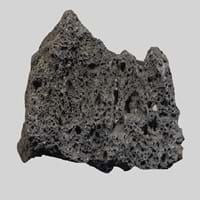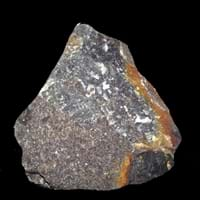Definition
Scoria is a dark-colored extrusive igneous rock with abundant round bubble-like cavities
Dolomite is a sedimentary rock containing more than 50 percent of the mineral dolomite by weight
Origin
Unknown
Southern Alps, France
Discoverer
Unknown
Dolomieu
Etymology
From late Middle English (denoting slag from molten metal), from Greek skōria refuse, from skōr dung
From French, from the name of Dolomieu (1750–1801), the French geologist who discovered the rock
Class
Igneous Rocks
Sedimentary Rocks
Sub-Class
Durable Rock, Medium Hardness Rock
Durable Rock, Medium Hardness Rock
Group
Volcanic
Not Applicable
Other Categories
Fine Grained Rock, Opaque Rock
Coarse Grained Rock, Fine Grained Rock, Medium Grained Rock, Opaque Rock
Color
Black, Brown, Dark Grey to Black, Red
Black, Brown, Colourless, Green, Grey, Pink, White
Durability
Durable
Durable
Scratch Resistant
Yes
Yes
Appearance
Glassy and Vesicular
Glassy or Pearly
Interior Uses
Decorative Aggregates, Interior Decoration
Decorative Aggregates, Homes, Interior Decoration
Exterior Uses
Garden Decoration, Paving Stone
Garden Decoration, Office Buildings
Other Architectural Uses
Curbing
Not Yet Used
Construction Industry
Cement Manufacture, Construction Aggregate, for Road Aggregate, In landscaping and drainage works
As a Flux in the Production of Steel and Pig Iron, As a Sintering Agent in Steel Industry to process Iron Ore, As Dimension Stone, Cement Manufacture, for Road Aggregate, Making natural cement, Manufacture of Magnesium and Dolomite Refractories, Production of Glass and Ceramics, Serves as an Oil and Gas Reservoir rock
Medical Industry
Not Yet Used
Taken as a Supplement for Calcium or Magnesium
Antiquity Uses
Artifacts, Monuments, Sculpture
Artifacts, Jewellery, Monuments, Sculpture, Small Figurines
Commercial Uses
As a traction material on snow-covered roads, Creating Artwork, High-temperature insulation, In gas barbecue grills
An Oil and Gas Reservoir, As a Feed Additive for Livestock, Gemstone, Metallurgical Flux, Production of Lime, Soil Conditioner, Source of Magnesia (MgO)
Types
Not Available
Boninite and Jasperoid
Features
Available in Lots of Colors and Patterns, Generally rough to touch, Surfaces are often shiny
Host Rock for Lead, Traps for subsurface fluids like Oil and Natural Gas., Zinc and Copper Deposits
Archaeological Significance
Famous Monuments
Data Not Available
Data Not Available
Famous Sculptures
Data Not Available
Data Not Available
Formation
Scoria forms when magma containing huge amount of dissolved gas flows from a volcano during an eruption.
Dolomite rocks are originally deposited as calcite or aragonite rich limestone, but during diagenesis process, the calcite or aragonite is transformed into dolomite.
Mineral Content
Apatite, Biotite, Calcite, Feldspar, Hematite, Hornblade, Ilmenite, Magnetite, Olivine, Pyroxene, Quartz, Silica
Clay Minerals, Pyrite, Quartz, Sulfides
Compound Content
Ca, NaCl
NaCl, CaO, Carbon Dioxide, Magnesium Carbonate, MgO
Types of Metamorphism
Burial Metamorphism, Cataclastic Metamorphism, Contact Metamorphism
Burial Metamorphism, Cataclastic Metamorphism, Contact Metamorphism
Types of Weathering
Biological Weathering, Chemical Weathering, Mechanical Weathering
Not Applicable
Types of Erosion
Chemical Erosion, Coastal Erosion, Glacier Erosion
Not Applicable
Grain Size
Fine Grained
Medium to Fine Coarse Grained
Fracture
Conchoidal
Conchoidal
Porosity
Highly Porous
Less Porous
Luster
Subvitreous to Dull
Vitreous and Pearly
Compressive Strength
Not Available
Specific Gravity
Not Available
2.8-3
Transparency
Opaque
Transparent to Translucent
Density
Not Available
2.8-2.9 g/cm3
Specific Heat Capacity
Not Available
Resistance
Heat Resistant, Impact Resistant, Pressure Resistant, Wear Resistant
Heat Resistant, Pressure Resistant, Wear Resistant
Deposits in Eastern Continents
Asia
Afghanistan, Indonesia, Japan, Russia
China, India
Africa
Ethiopia, Kenya, Tanzania
Morocco, Namibia
Europe
Greece, Hungary, Iceland, Italy, Turkey
Austria, Italy, Romania, Spain, Switzerland
Others
Not Yet Found
Not Yet Found
Deposits in Western Continents
North America
Bahamas, Barbados, Canada, Costa Rica, Cuba, Jamaica, Mexico, USA
Mexico, USA
South America
Argentina, Chile, Ecuador, Peru
Brazil, Colombia
Deposits in Oceania Continent
Australia
New Zealand, Western Australia
New South Wales, Queensland, Yorke Peninsula
All about Scoria and Dolomite Properties
Know all about Scoria and Dolomite properties here. All properties of rocks are important as they define the type of rock and its application. Scoria belongs to Igneous Rocks while Dolomite belongs to Sedimentary Rocks.Texture of Scoria is Vesicular whereas that of Dolomite is Earthy. Scoria appears Glassy and Vesicular and Dolomite appears Glassy or Pearly. The luster of Scoria is subvitreous to dull while that of Dolomite is vitreous and pearly. Scoria is available in black, brown, dark grey to black, red colors whereas Dolomite is available in black, brown, colourless, green, grey, pink, white colors. The commercial uses of Scoria are as a traction material on snow-covered roads, creating artwork, high-temperature insulation, in gas barbecue grills and that of Dolomite are an oil and gas reservoir, as a feed additive for livestock, gemstone, metallurgical flux, production of lime, soil conditioner, source of magnesia (mgo).










